Air Quality Testers
Air quality testing equipment for monitoring and testing overall indoor air quality and air pollution. Testers to help evaluate and take action against sick building syndrome (SBS) and maintain healthy levels of CO2 and oxygen in working environments.
Find out more about Air Quality Testers below.
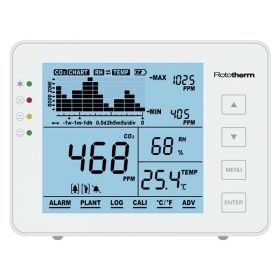
- Measure carbon dioxide, temperature, and humidity
- Adjustable alarm with audible and visual alerts
- Built-in data logger: record data at minute, hourly, daily, or weekly intervals
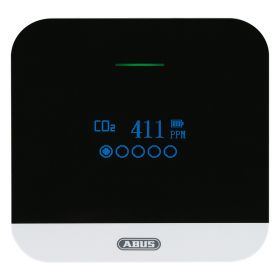
- Monitor indoor CO2, air temperature, and humidity
- NDIR CO2 sensor has a service life of 10 years
- Audible alert, LED indicator, and OLED display

- Measures CO2, relative humidity and air temperature
- Desktop-based: just place down and start measuring!
- High quality Extech product with a range of advanced functions
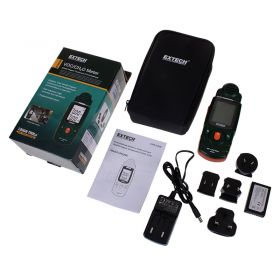
- Selectable measurement units: ppm and mg/m³
- Indicates TVOC and HCHO concentrations simultaneously and in real-time
- Adjustable alarms with visual and audible alerts
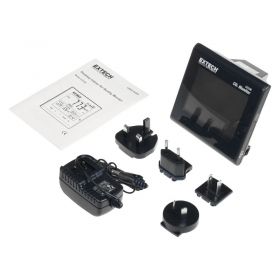
- Large, backlit LCD screen
- Measures temperature, CO2 and humidity
- User programmable visible and audible alarm
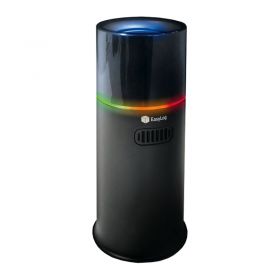
- Monitors and logs temperature, humidity, pressure, VOC, and particle matter
- A coloured status ring indicates the air quality using a traffic light system
- Logs data to the EasyLog Cloud
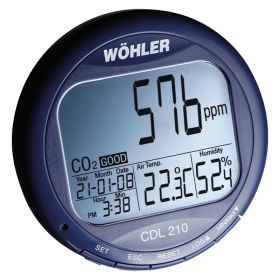
- Measure CO2 concentration, air temperature and air humidity
- Audible and visual ventilation remiders
- Real infrared CO2 measurement (NDIR) up to 9999 ppm
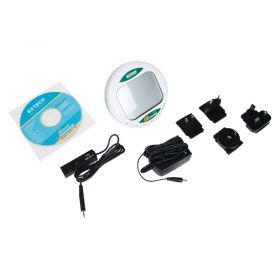
- Measure for harmful levels of CO2 in the air
- Measures temperature in both Celsius and Fahrenheit
- Also measures humidity of the environment
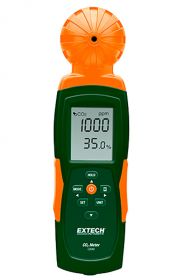
- Measures CO2 concentrations, air temperature and air humidity
- Calculates dew point and wet bulb
- Logs data to a PC in real-time
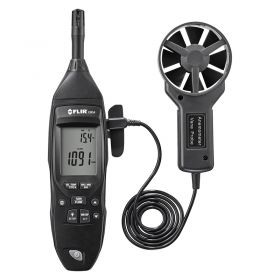
- Inspect and troubleshoot HVAC/R ducting systems
- Humidity, Wet Bulb and Dew Point functions
- Type-K contact temperature probe for measuring operating temperatures
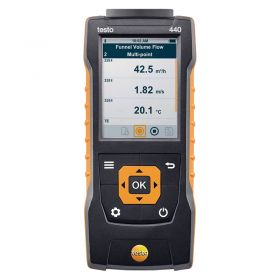
- Use with a variety of Testo probes to measure and array of air quality parameters
- Bluetooth probes facilitate cable-less measurements
- Maximise uptime: only probes need to be sent for calibration
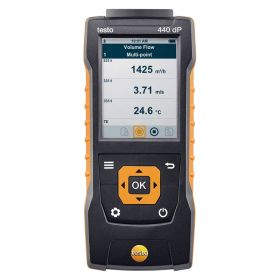
- Pilot tube and K-factor measurements
- Suitable for monitoring fans, filters, test ducts, air/ceiling outlets, etc
- Up to three probes can be connected simultaneously
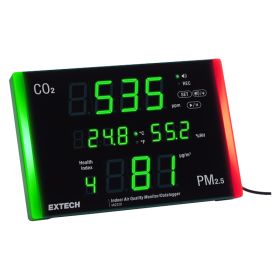
- Tri-colour LED bars
- Store up to 12,000 records
- Continuously monitor indoor air quality conditions
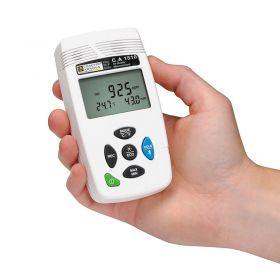
- Data logger: records up to 1 million measurements
- Measures CO2, air temperature and air humidity
- Indicates the level of comfort based on selected parameters
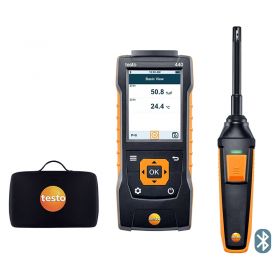
- Conduct air velocity, IAQ, temperature and humidity measurements
- Calculate dew point, wet bulb temperature, absolute humidity, and more
- Measure storage and refrigeration rooms/systems, workrooms and heat pumps
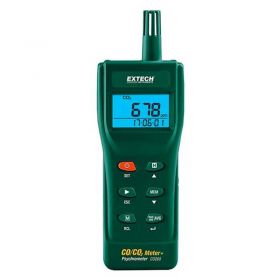
- Measure CO, CO2, air temperature and relative humidity
- Calculates dew point and wet bulb temperatures
- Supports continuous datalogging of up to 32 000 readings
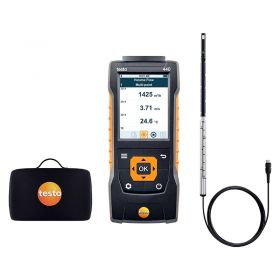
- Optimised for measuring ventilation ducts of various sizes
- Automatically recognises the hot wire probe and adjusts parameters accordingly
- Capable of measuring air velocity, volume flow and air temperature in parallel
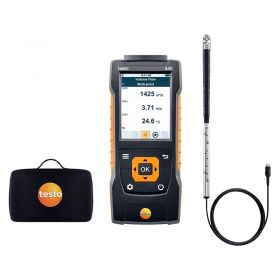
- Measure the air velocity and volume flow of ducts
- Vane Probe range: +0.6 to +50 m/s
- Automatically recognises the vane probe and adjusts parameters accordingly
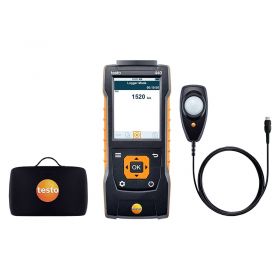
- Measure the illuminance levels in offices, hospitals, museums, schools, etc
- Combined with various probes to measure environmental parameters
- Automatically recognises connected probes and adjusts parameters accordingly
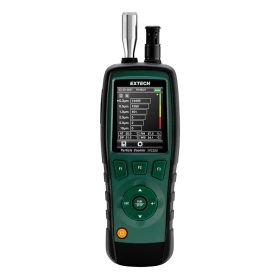
- Measure up to six channels of particle sizes
- Determine air temperature, relative humidity, dew point, and wet bulb
- Save up to 1000 data sets
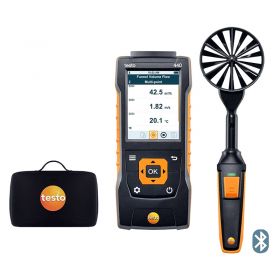
- Optimised for measuring volume flow at ducts and air/ ceiling outlets
- Save up to 7500 measurement protocols
- Perform cable-less measurements using the Testo Ø100mm Bluetooth Vane Smart Probe
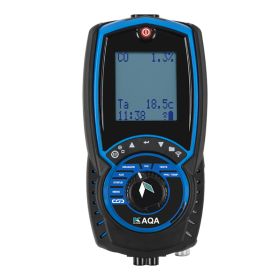
- Four versions available: one gas, two gas, three gas, and four gas
- Can be fitted with the gas sensor/s of your choice
- Test domestic & commercial boilers, heat pumps, flueless gas appliances, & space/water heaters
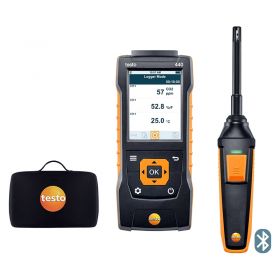
- Measure CO₂ concentration, temperature and humidity in parallel
- Calculate wet bulb temperature, dew point, and absolute humidity
- Monitor indoor environments such as offices, production areas, and storage facilities
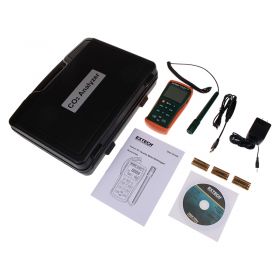
- Checks for carbon dioxide (CO2) concentrations
- Maintenance free dual wavelength NDIR (non-dispersive infrared) CO2 sensor
- Also measures temperature and relative humidity
About Air Quality Testers
It's easy to simply forget about air quality. After all, the air we breathe is invisible and is often just accepted as part of our daily lives, but many factors can have an effect on the air quality of an environment, and these in turn may produce conditions that are uncomfortable for humans to comfortably reside/work in.
Air quality testers are designed to evaluate that the environment around the tester is well-ventilated, that is at a comfortable temperature, that there aren't any excess gasses in the air and that excessive moisture levels aren't detected. Whenever any of these parameters are outside what is considered the norm this can ultimately result in decreased efficiency amongst people in that environment - if the area isn't comfortable, for example too hot, it simply isn't as good for productivity.
Indoor air quality is linked regularly together with sick building syndrome, or SBS. Poorly installed air conditioning, ventilation, heating, or other HVAC installations contribute towards making an environment that is uncomfortable for people to work in, leading to the building being designated as 'sick' due to the effects it is having upon those within it. Effects of a poorly installed system can vary greatly depending on what is causing the problem, but common complaints of sick building syndrome include uncomfortable temperatures, irritation of the eyes, nose, and throat, general health problems, skin irritation, and various other effects.
This is exactly why assessing indoor air quality (IAQ) is extremely important for building surveyors and absolutely anyone who wants to ensure that air quality is at the levels it needs to be to make the environment as comfortable as possible.
Air quality assessments are used to observe many different aspects of a building. One of the most commonly evaluated is ventilation - if this is incorrectly installed, the air circulating the building will be of poor quality, and those breathing it will be more prone to health conditions because of it. Ventilation also ties in with temperature - if hot air is allowed to constantly circulate in a building with no means of ventilating it away from the building it'll create a very hot, very humid environment. Ventilation is also worth considering if you have designated smoking areas - there's a chance that that smoke could get into the building, thus reducing the overall indoor air quality of that particular environment.
The overall air quality index of a building is also affected greatly by chemical contaminants from both indoor and outdoor materials. This doesn't just refer to actual liquid-based chemicals either - many different materials including adhesives, carpet, upholstery and even cleaning agents can release airborne particles that make the air take a dip in overall quality. Some contaminants can potentially get into a building's air from outside - these include fumes rising from exhaust and chimneys, and both indoor and outdoor chemical contaminants can cause build-ups in dangerous gas levels, leading to an abundance of CO (carbon monoxide) or CO2 (carbon dioxide) if left unchecked.
Actual biological contaminants in an environment can cause problems within a building as well. Left unchecked these can cause any number of health problems and build-ups of biological contaminants can come from everything from humans themselves to build-ups of bacteria forming inside poorly treated ventilation. Once it's present a biological agent can easily circuit around the entire building through the ventilation, potentially infecting humans there to breathe it in.
Many of our indoor air quality meters are manufactured by Testo, a leading producer of many different types of test equipment. Devices such as the Testo 435 are designed purely with evaluating air quality in mind and can be used with multiple probe types to evaluate lighting conditions, air quality, temperature, and a whole lot more.


